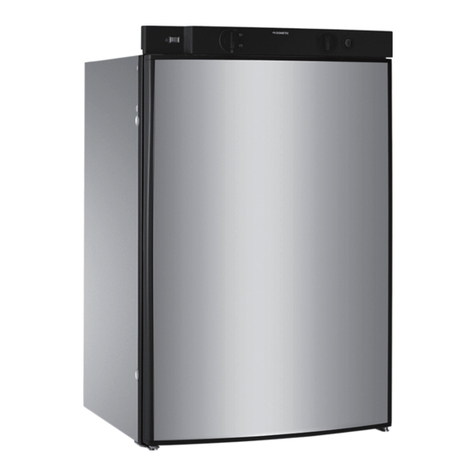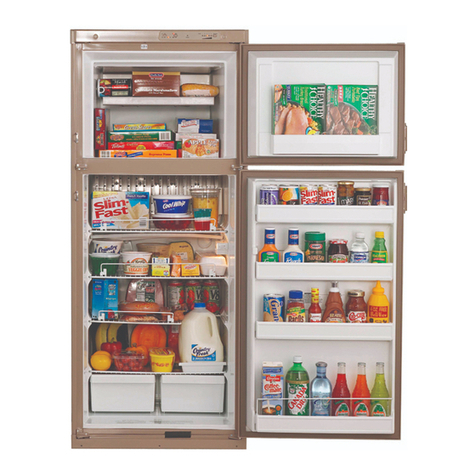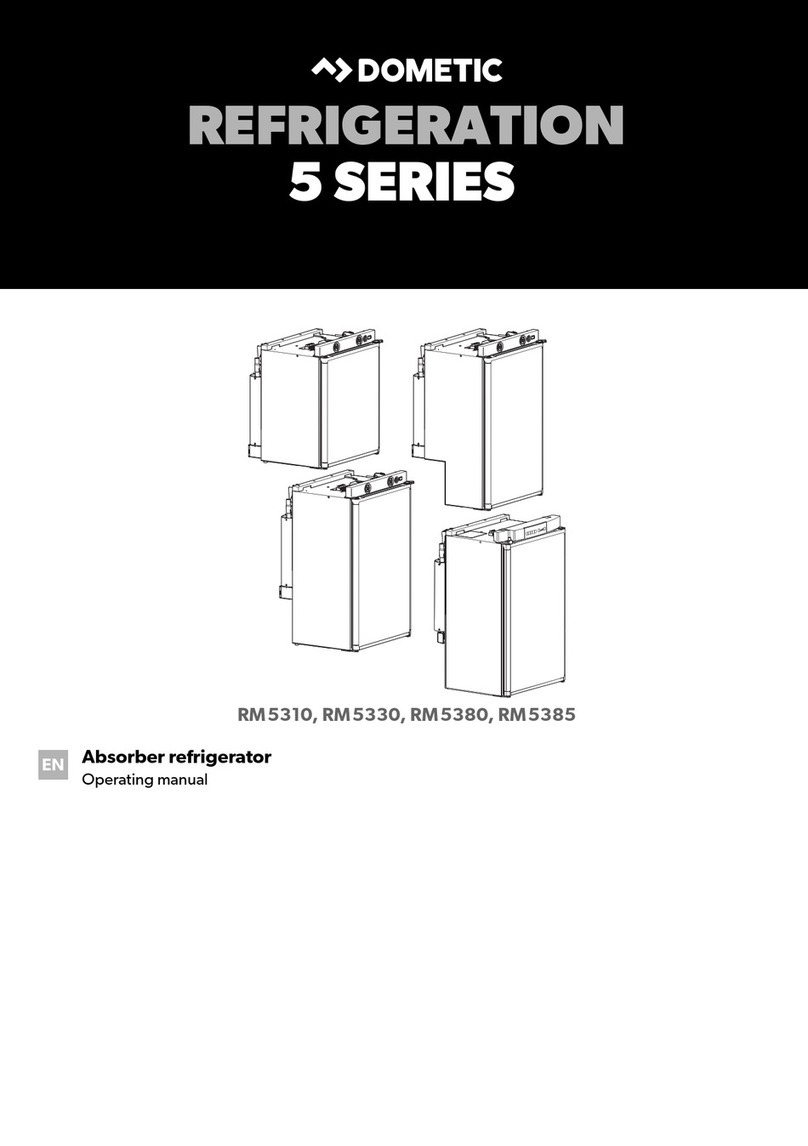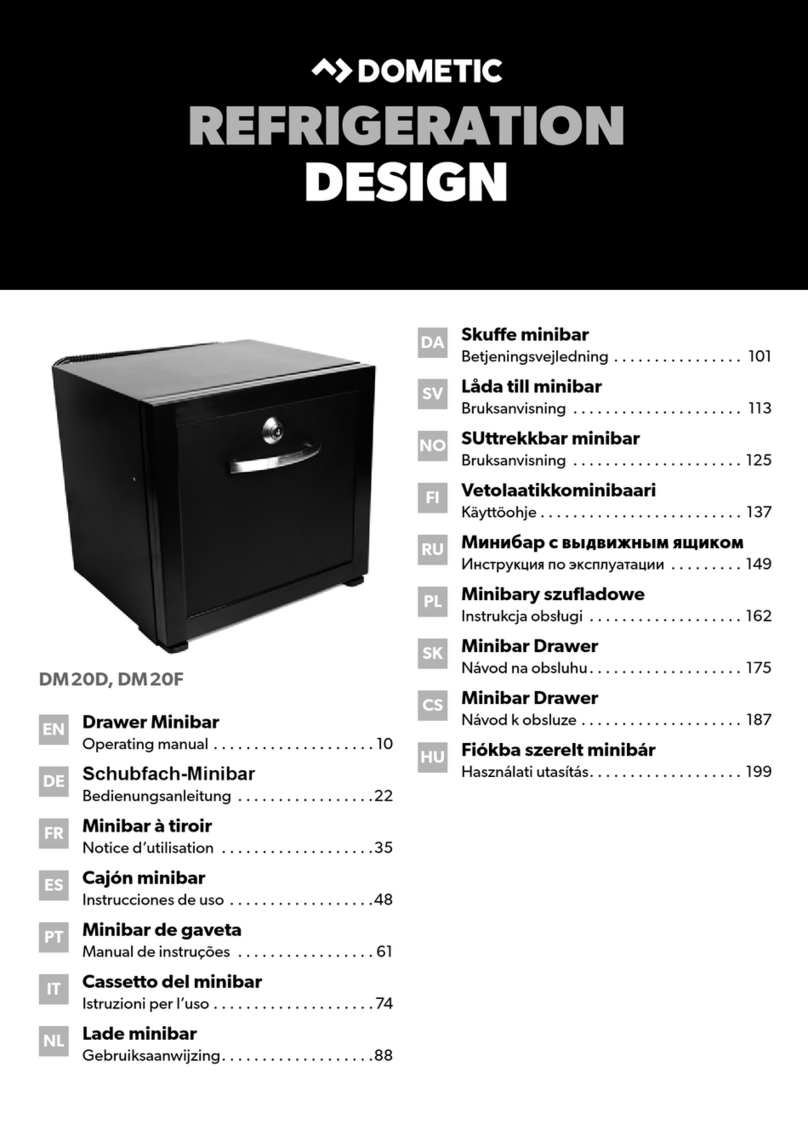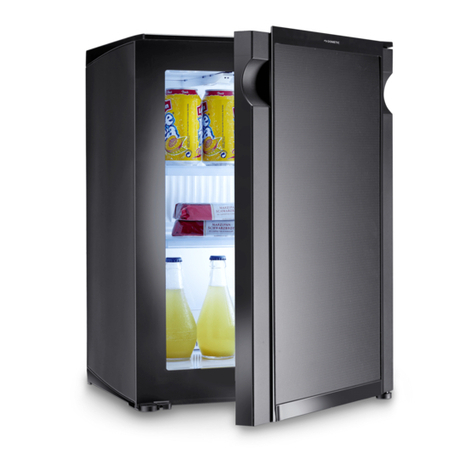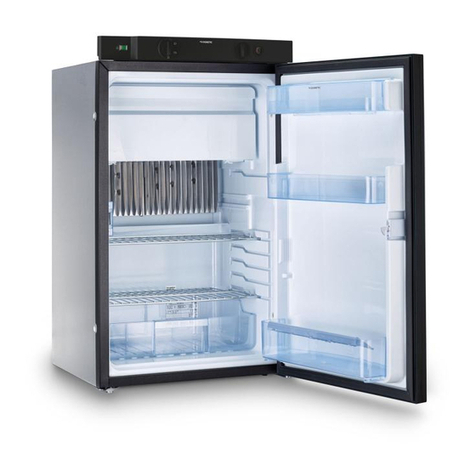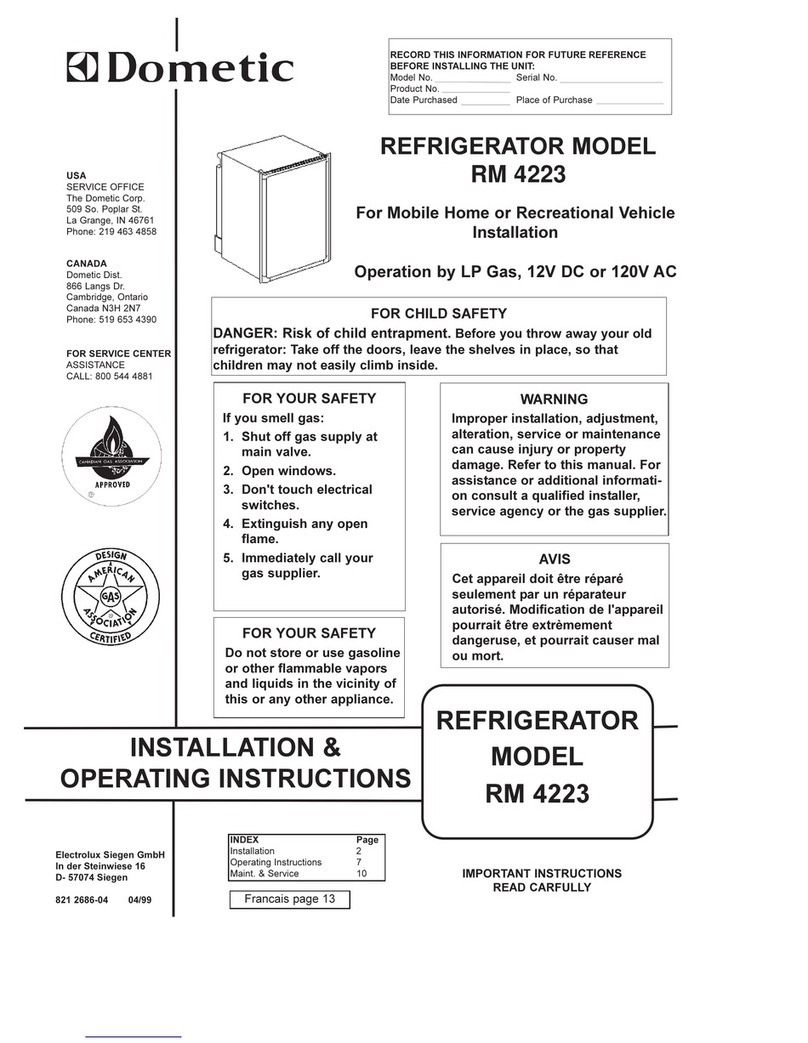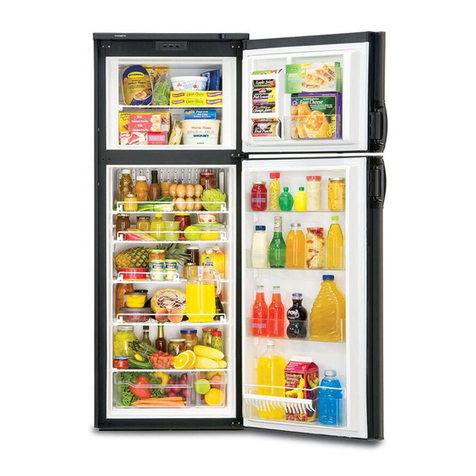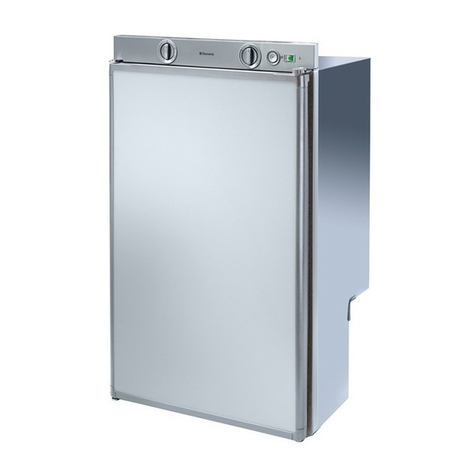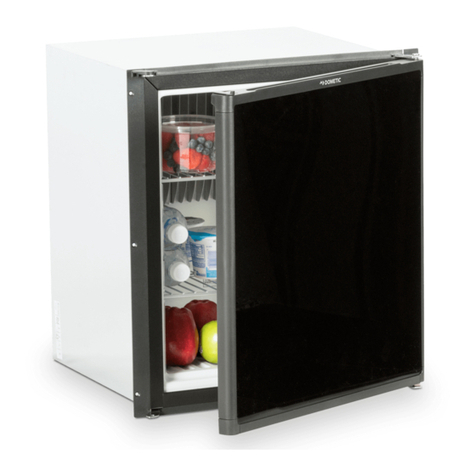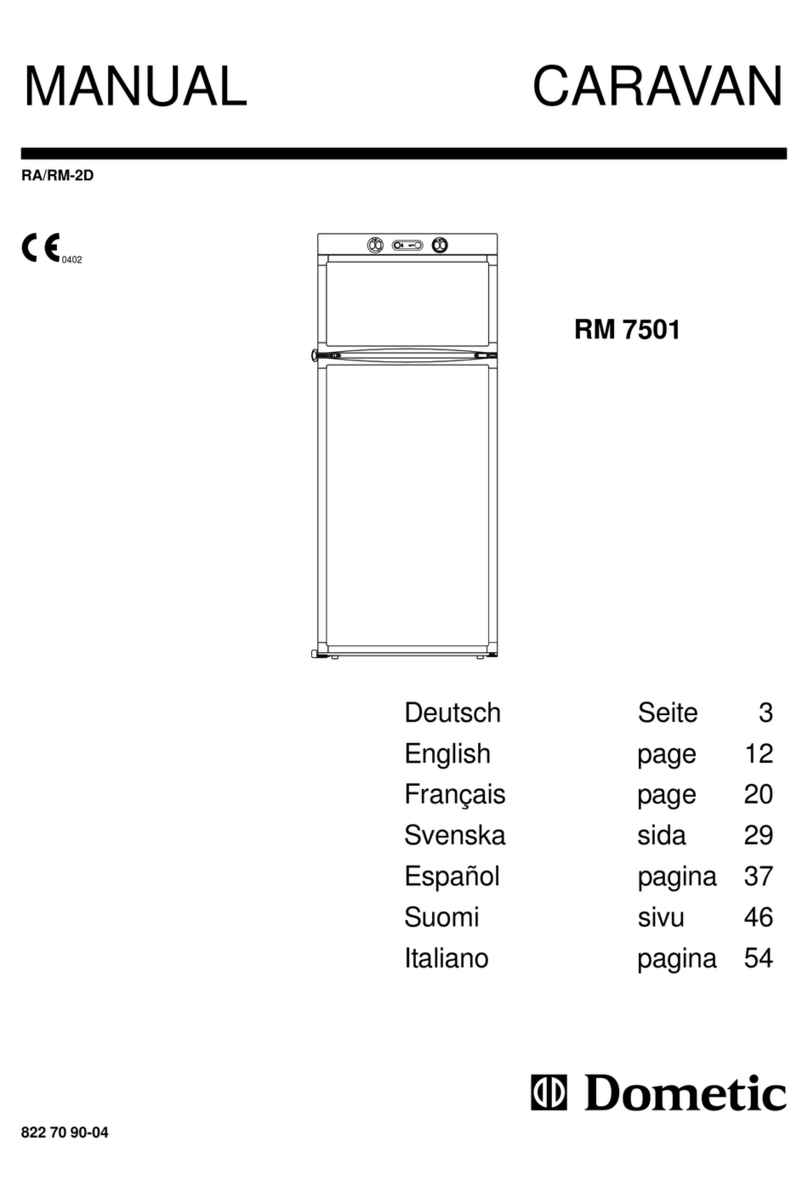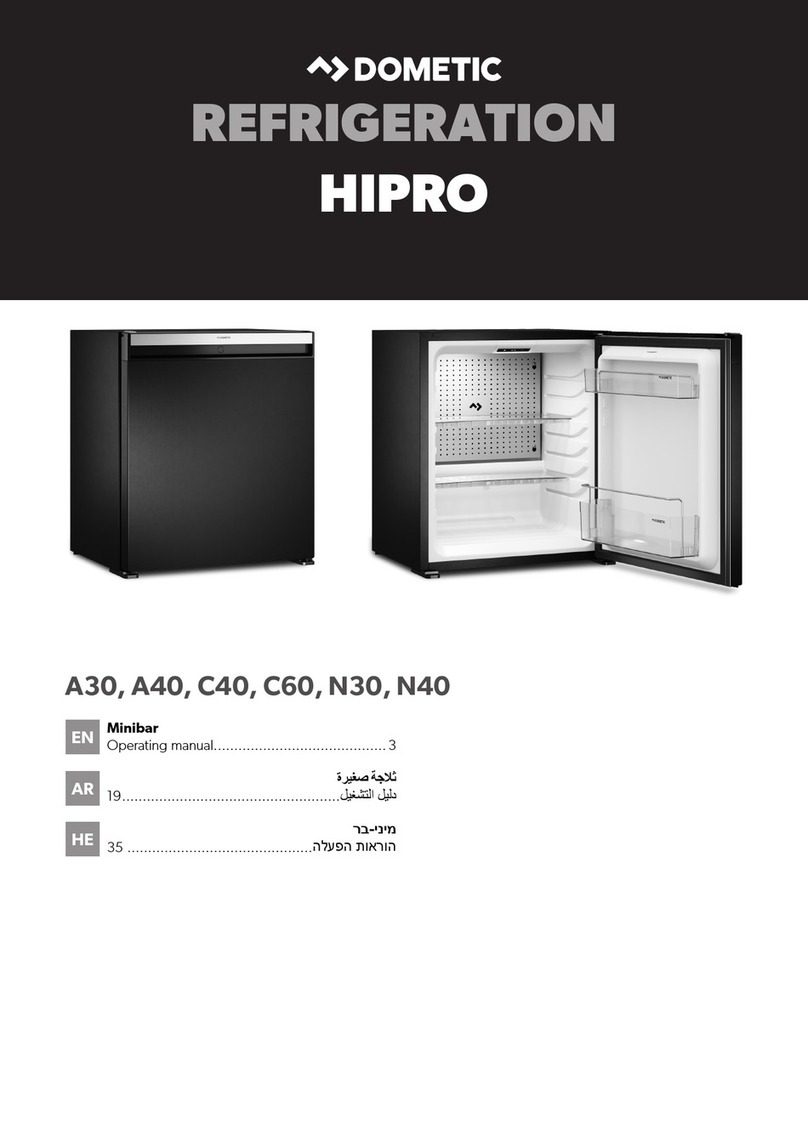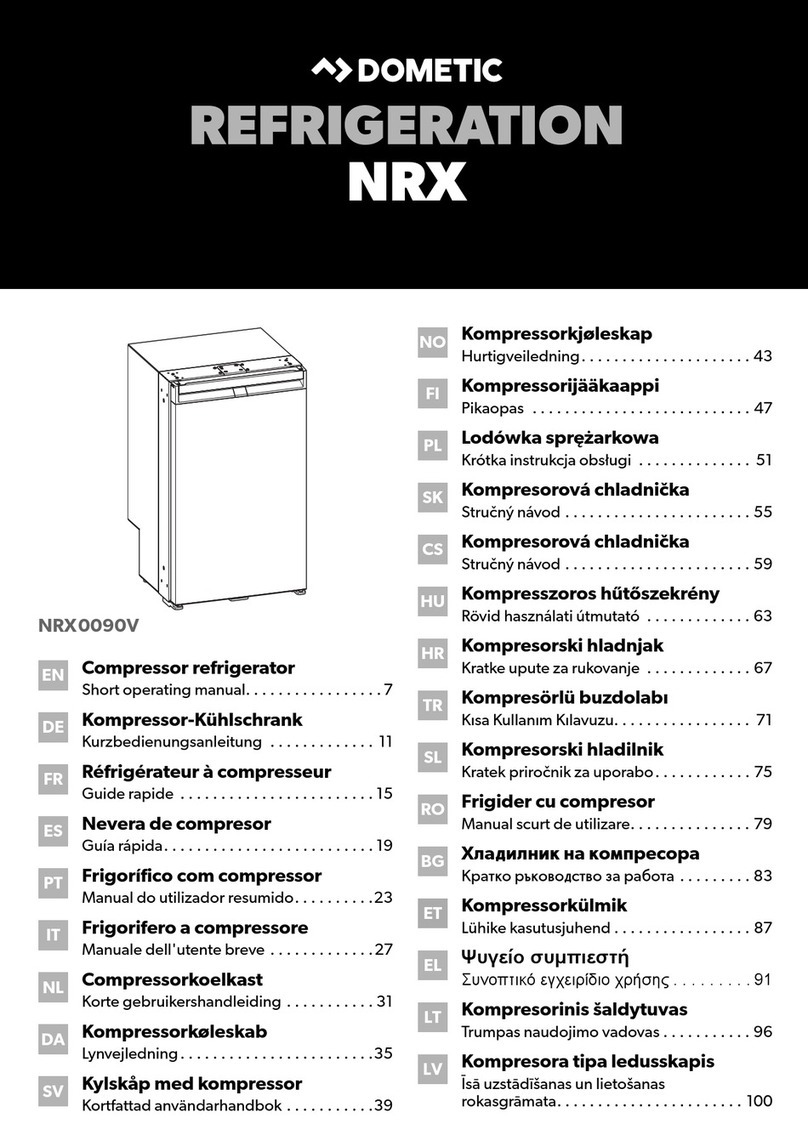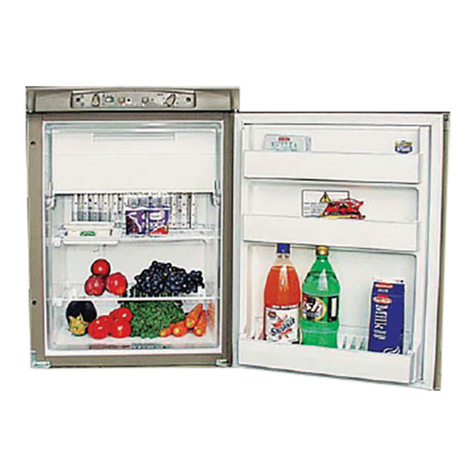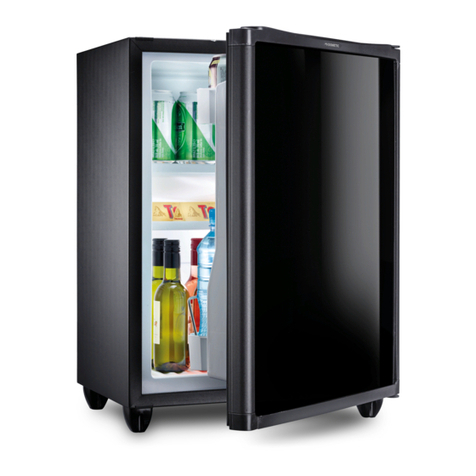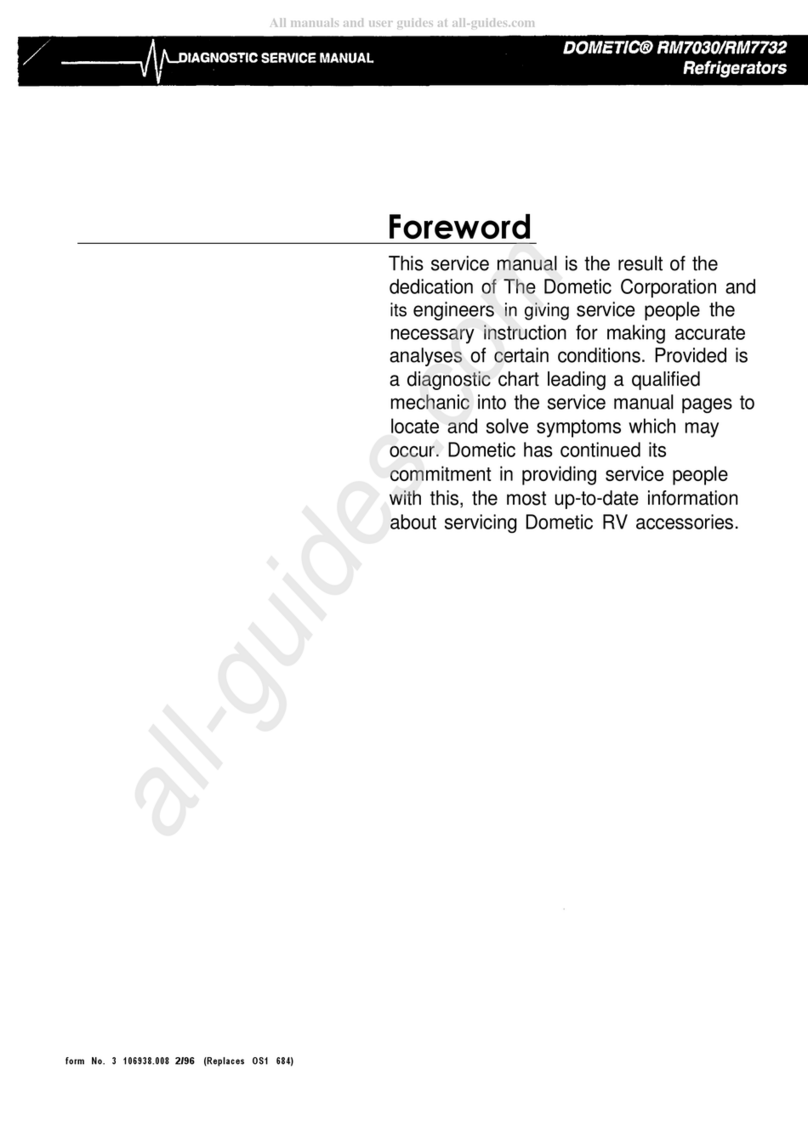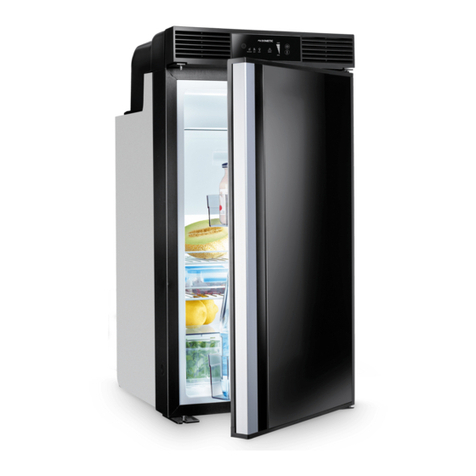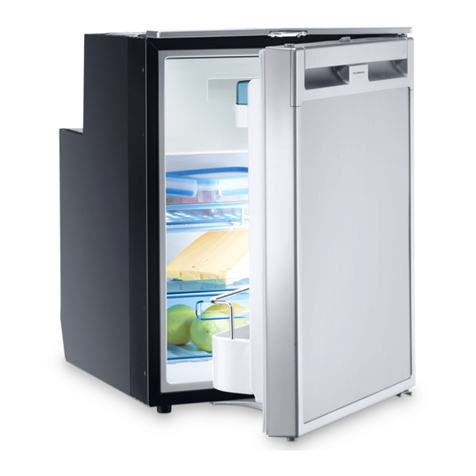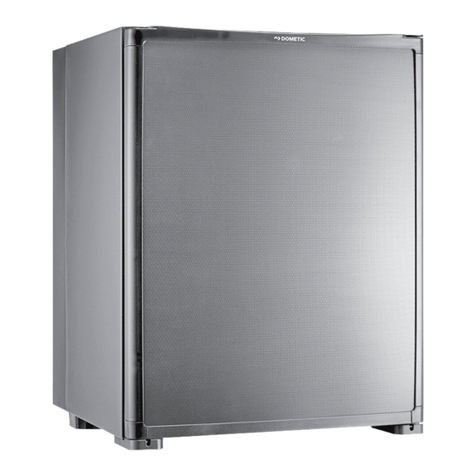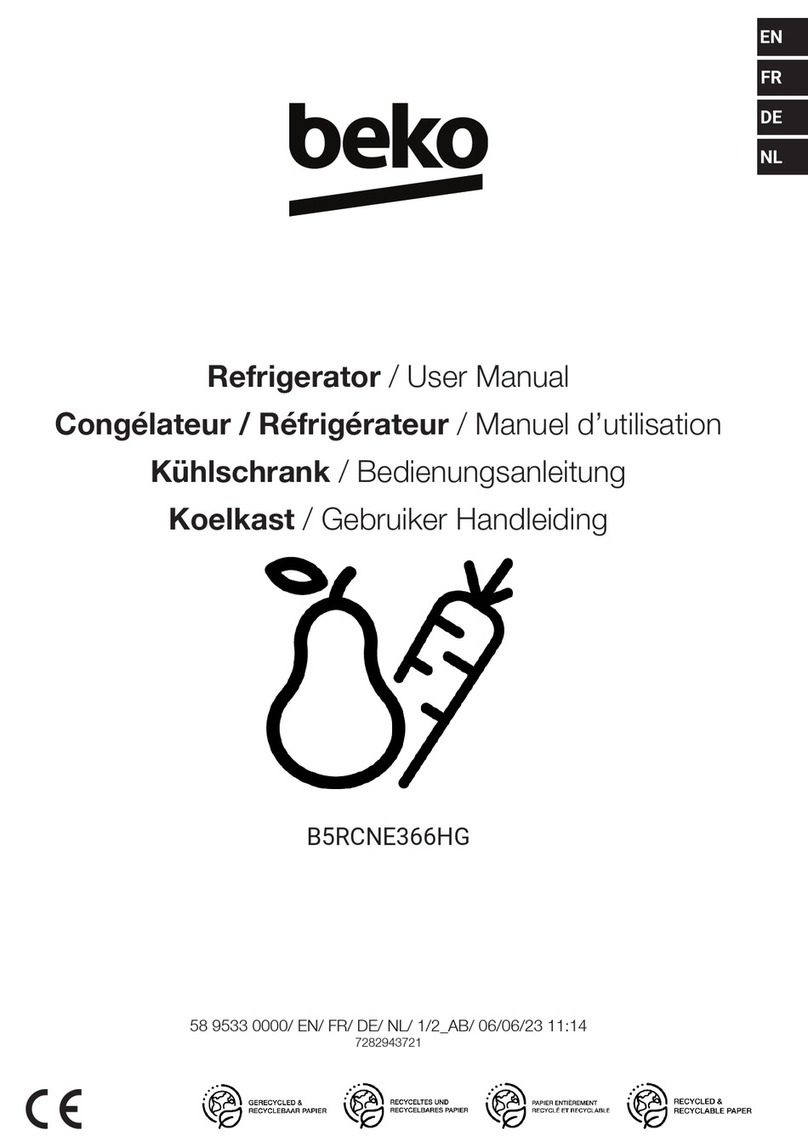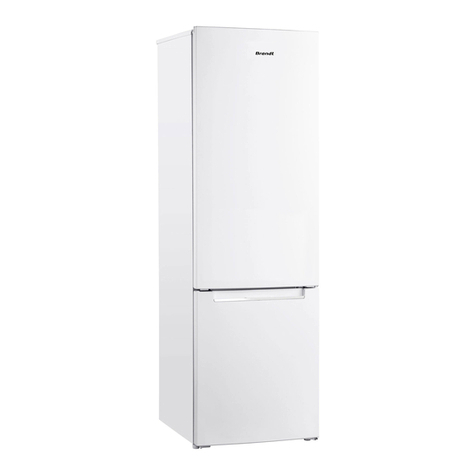7
6. Changing the feet
Should you wish to install your Health Care refrigerator,
you will not need the 40-mm feet. After having removed
the 40-mm feet, you can then re-attach the 12-mm
feet, located inside the 40-mm feet, to the front and
rear fixing points. The 40-mm feet and the 4 remaining
screws should e retained for future use.
7. Thermometer (Fig. 5)
Refer to the separate instruction leaflet supplied with
the thermometer. The thermometer can e stood up
using the attached stand or alternatively it can e fixed
to the refrigerator door, in which case the sensor wire
should e arranged so that it is not stretched or
damaged when the door is opened.
The temperature sensor is located inside the
refrigerator elow the ottom shelf.
The display will then show the current, maximum and
minimum temperature
inside the refrigerator.
After the first pull down of the refrigerator (allow four
hours) please make a "reset" on the thermometer
ecause otherwise it will keep as "maximum" the
am ient temperature.
It is important to re-set the thermometer regularly to
ensure that the temperature is maintained etween
2°C and 8°C.
The temperature readings may rise temporarily after
opening the door or placing additional items inside the
ca inet.
If applica le the attery transit strip must e removed
to activate the temperature display.
8. Useful suggestion
Do not overfill the appliance. It is advisa le to leave
some space etween the products in the ca inet to
ensure efficient and even cooling. If the shelves are
packed too tightly there may e unaccepta le
temperature variations.
9. Defrosting, cleaning and
maintenance
Frost will gradually form on the cooling surfaces and it
must not e allowed to ecome too thick since it acts
as an insulator and interferes with the cooling.
To defrost, disconnect the refrigerator from the
electricity supply and leave the ca inet door open.
The frost will melt and the defrost water will run
through the drain tu e from the drip channel into an
evaporating vessel located at the ottom rear of the
refrigerator. (Fig. 6) The defrost water will evaporate
automatically into the circulating air and the vessel will
not need emptying manually.
Figure 5.
Figure 6.
